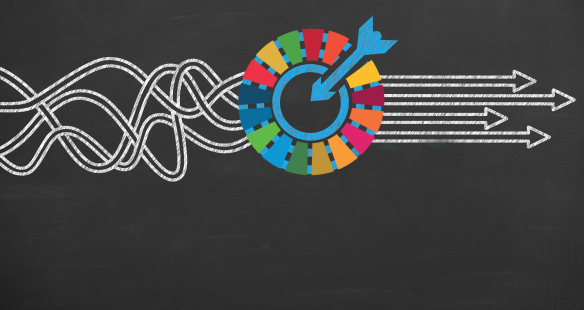Progress towards mobilizing investment towards the Sustainable Development Goals has been slow and thin, write Rockefeller Foundation’s Lorenzo Bernasconi and Carolien de Bruin and Josephine Damstra of C-Change, an Amsterdam-based impact strategy consultant.
In a post for the World Economic Forum, the authors issue a call for solutions “to achieving a step-change in the number and scale of ‘fit-for- purpose’ investment products that are SDG-aligned.” That call is intended to animate a series of design sessions, including at the GSG Impact Summit in New Delhi Oct. 8-9, to develop such solutions.
Dutch pension fund moves from impact alignment to impact management
“Safeguarding a more stable and prosperous long-term future is critical to all of the world’s largest institutional investors, or so-called ‘universal owners’ with highly-diversified, long-term portfolios which are inevitably exposed to global environmental, social and economic shocks and stresses,” they write.
“The world is at the beginning of a seismic shift towards an ‘impact economy’ where sustainability and social impact is fundamentally incorporated across investment, production and consumption decisions.”
The problem: “Increased interest in Socially Responsible Investing, or SRI, has not translated to a significant growth in investment in on-the-ground projects and solutions that address the SDGs.”
They cite a study this year by the Boston Consulting Group that found “the number of privately- investible large-scale projects in developing countries with the potential to advance progress toward the SDGs has actually fallen since 2012 and been flat since 2015.”
The diagnosis: “Clearly, business as usual is not an option if we are serious about addressing the SDG challenge,” they continue. “In the words of Mark Carney, Governor of the Bank of England, we will need to build a new financial system to address the SDG financing gap.”
Conversations with more than 30 investors, intermediaries, advisors and others surfaced six market failures in today’s capital markets, the authors say. They are:
Visionary leadership and incentive alignment, i.e. Need for stronger leadership and commitment by key stakeholders to drive the SDG investment agenda.
More robust information, i.e. Need for better data, clearer standards and benchmarks to drive SDG investments.
Aligned capabilities, i.e. Need for more aligned capabilities to effectively bridge the impact finance ecosystem with mainstream finance.
Structural alignment, i.e. Need for greater structural alignment around scale, time horizon and costs of impact products and instruments to facilitate uptake and scaling.
New intermediation, I.e. need for strong bridges linking the impact/development finance ecosystem to the capital markets.
Catalytic support, i.e. Need for more catalytic support for the development and scale of impact products and investments.

The authors cite the growth of green bonds, which tie the proceeds of bond issues to environmentally-friendly investments such as wind and solar power, mass transit and upgrades in energy efficiency. From a standing start a decade ago. the green bond market grew to more than $160 billion last year, making it “one of the fastest-growing segments of the fixed-income universe with an expected compound annual growth rate of 30% in 2018.”
The conclusion: “We need an economic model that serves our society and planet rather than the other way around, as well as bigger, bolder, and smarter finance solutions that are truly destined and able to build a better world,” the authors say.
“We will keep a relentless eye on building out innovative solutions that meet the needs of the largest pools of investment capital and measurably contribute towards the Sustainable Development Goals.”











